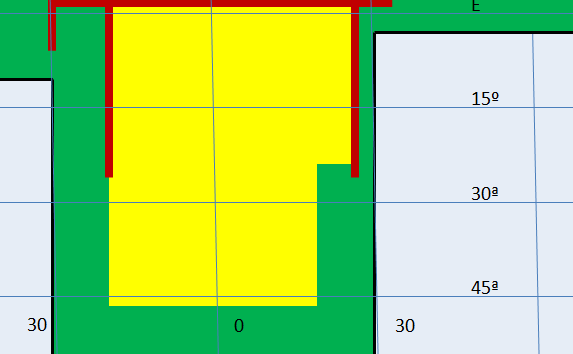Read up on deserts and sand dunes.
You can get a bunch of different answers depending on
* the amount of available sand,
* the pattern of winds
* the annual and decadal moisture regime
Desert is defined diferently by different groups.
Popular: Dry and dusty. No plants.
Geographer: Less than 10 inches (250 mm) precip a year.
Ecologist: Potential evapotransporation = X * annual precipitation, with X > 1
The geographer considers both the high arctic (north of tree line) and Antarctica to be cold deserts.
An ecologist's desert can be full of life. But water is the limiting factor in most organism's existance.
Most of Montana, Wyoming, Utah, southern Idaho, eastern Oregon eastern Washington, much of California, Nevada, Arizona, New Mexico, West Texas are desert.
Can desert types be mixed.
Very much so. Much depends on the geology and the prevailing wind. If you have easily eroded material, you get lots of sand. If you have a prevailing wind from one direction, the sand collects on the down wind side of the region.
Barach dunes (crescent shaped) can form sand islands in the middle of a cobbled plane.
Elevation changes can make for local wet areas. Much of the Western U.S. is 'Basin and Range' with fairly small (25-50 mile long x 10 mile wide) mountain ranges separated by fairly flat valleys. The valleys are desert. The mountain ranges catch what rain happens.
Because rain distribution can be heavily modified by mountains, cold currents etc , you can get lots of shadings in desert types, ranging from just barely a desert -- just very arid -- to places where no rain has fallen for years.
Because so much depends on wind you will get big differences depending on how the wind blows.
Most deserts of the world are neither sand nor cobble. They are dirt. Most deserts have some degree of life. That degree of life is both space dependent (Ravines running away from the equator have more shade, polar sides of mountains have more shade) and time dependent: Life is set up to take quick advantage of water when available: desert flowers that run through their entire life cycle in two weeks after a rain; brine shrinp that explode when the lake fills up, and leave a layer of eggs when the lake dries up.
Google desert on google images to see the impressive variety.


